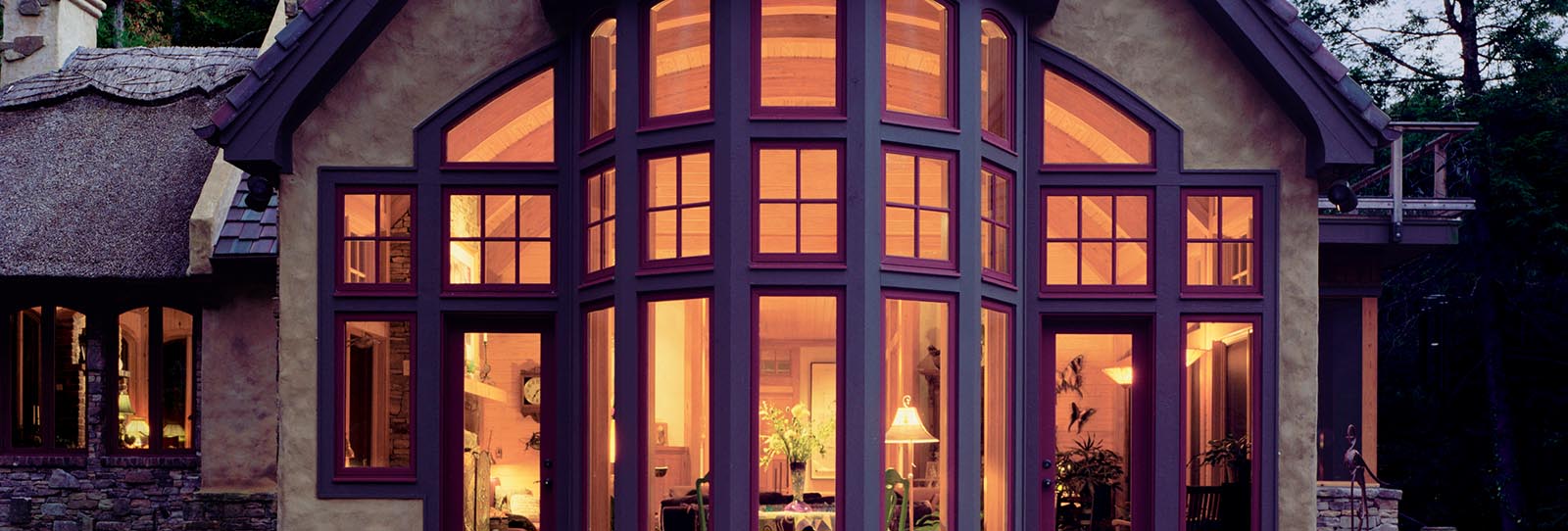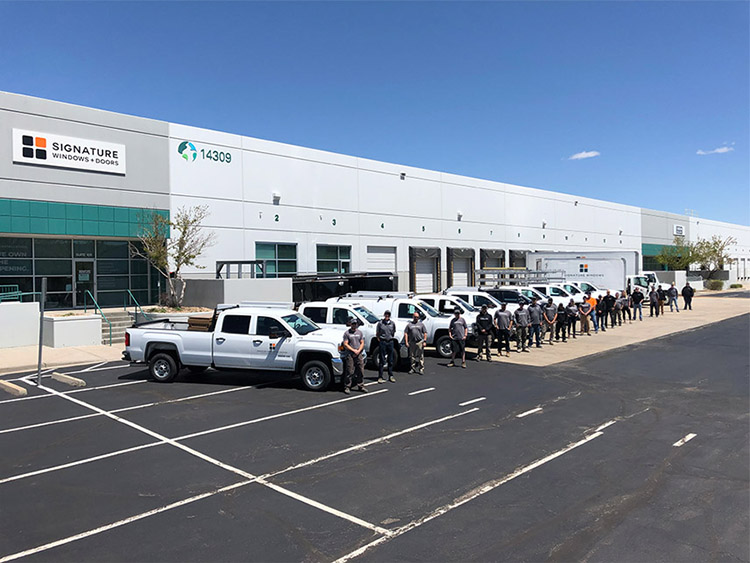WINDOW REPLACEMENT GUIDE:
TYPES OF REPLACEMENT WINDOWS
There are a lot of windows out there and so many options can be overwhelming. I am going to decode the options for replacement windows, one-by-one by putting aside the variety of ways a window can operate and focusing on the materials that make up its structure. Replacement windows are available in vinyl, composites, fiberglass, aluminum-clad wood, and all wood frame materials. There are pros, cons and typical applications for each option of replacement windows and I will discuss them all in this chapter.
Vinyl Windows
There are literally 100s of vinyl window manufacturers in the U.S. These windows can be found at home improvement retailers, specialty dealers and large and small window replacement companies. The number of suppliers and the variety of outlets confound the selection process.
Pros: Vinyl windows are the most widely produced windows and most often used in replacement applications. This is because vinyl windows are easy and relatively inexpensive to manufacture, and this cost structure has resulted in numerous national and regional suppliers.
Cons: In what may be a surprise for some, we are seeing a strong uptick in demand to replace 10 to 15 year old vinyl windows that no longer operate properly or that are leaking.
Colorado’s climate and elevation conspire to dramatically shorten the life cycle of vinyl windows
Colorado has a population of just over 5 million with slightly more than half of that living in the I-25 corridor stretching from Ft. Collins to Colorado Springs (the “Front Range”). The climate is semi-arid with low humidity. The result is high surface temperature variations night to day, winter and summer. For example, in January, the surface (not air) temperature on a south facing window can range from an overnight low of 19 to a daytime high of 70. As vinyl is a thermoplastic and not a thermoset material, it expands and contracts with the temperature and becomes softer when warm and more brittle when cold. This cycling, day after day, year after year, works against the corner welds of the sash and frame, as well as the seal of the glass which, unlike vinyl, moves very little with temperature variations.
The rate of expansion/contraction is exacerbated by the heat absorbed by darker colors and is the reason that the vast majority of vinyl windows are available in white and tan colors only. A number of companies are beginning to offer darker colors using heat reflective technologies. I am skeptical that darker colors will stand up to our climate but we will know soon enough.
In addition to the expansion/contraction problems, high altitude markets have much higher UV exposure than the majority of the country and while vinyl manufacturers include UV inhibitors in their products, we see yellowing and color degradation in windows that are just three to five years old.
Ironically, vinyl windows normally come with a lifetime product and labor warranties. I can envision a room full of actuarial accountants determining the likelihood that a buyer of vinyl windows will still own the home when problems arise, or that the current owner won’t think to figure out the transferability of any warranty. Not picking on accountants, I used to be one.
Aluminum Clad-Wood Windows
Aluminum-Clad Wood refers to wood frame windows with external aluminum applied or “clad” to provide a thermally efficient, low maintenance, long lasting solution for replacement windows.
Aluminum-Clad Wood units offer full wood interiors in a variety of species. In addition to the beauty of wood, aluminum-clad windows can be built in very large sizes and meet the design requirements of the most demanding architectural specifications. These windows are also the best option when replacing windows in historic buildings or when there is a desire to remain aesthetically sensitive to other historic details.
The aluminum cladding used on the wood frame is either extruded to the thickness of a quarter, or roll formed to the thickness of an aluminum can. Extruded aluminum provides a much longer lasting paint finish, and should be considered essential in high altitude, high UV installations markets like Colorado and New Mexico.
There are dozens of aluminum-clad window manufacturers, offering a wide variety of quality and price points. As you evaluate brands for replacement windows, look for the following attributes:
- Design Pressure Ratings on Door and Windows – measures the rate of air and water infiltration – the higher the rating the better
- Fully-Extruded Sashes and Frames – allows for longer lasting paint finishes and better thermal performance
- The AAMA rating of the paint finish – either 2603, 2604 or 2605 – the higher the better in terms of how long the paint finish remains looking as good on the home as it did in the showroom.
All Wood Windows
It is possible to buy window frames and sashes made entirely of wood, but unless you are forced by a historic preservation authority, don’t do it.
Today’s harvested woods are not as durable as the woods of old. No matter how diligent you are about caulking and keeping up with the paint finish, you will lose the race and suffer degraded energy efficiency first, and aesthetics and operation second.
Composite Windows
Another option to explore is composite windows. Normally, composite windows are discussed in a group with fiberglass replacement windows. However, I think it is important to understand and evaluate the differences between the two choices separately before comparing.
Composites are made of a combination of materials. One of the leading replacement brands uses a mixture of polymer and sawdust to create a frame material. I am no material scientist and I won’t take the uninformed cheap shot of attacking the vinyl in these windows. Moreover, there is a strong “green” argument to the innovative use of waste material.
In 2011, window manufacturers began releasing the result of longevity studies on composite paint finishes using test criteria established by the American Architectural Manufacturers Association. Please read our recent blog post with the announced results of Integrity fiberglass window performance. Of the three classes, 623, 624, 625, Integrity met the criteria for the top level, 625 standard.
Fiberglass Windows
Full fiberglass window material offer many advantages, including:
- 39% less energy to produce than vinyl
- 8x stronger than vinyl
- Inert – minimal off-gassing and no VOCs
- Thermoset material – will not become soft in warm temperatures or brittle in cold temperatures like vinyl
- Expands and contracts 833%less than vinyl – greatly enhancing longevity
- 5x better resistance to UV and fading than vinyl allowing for a range of exterior colors including bronze and black
Fiberglass has been touted as the frame material of the future for many years. We believe its time has come, driven by superior energy efficiency and longevity. Some fiberglass window manufacturers offer full wood interiors while others offer wood veneers. All manufacturers offer fiberglass interiors as well.
Fiberglass advantages extract a price of their own. Fiberglass frame materials are much more difficult to produce, thus limiting the number of quality providers. Fiberglass costs more than vinyl, 20% to 50% depending on the quality of vinyl being compared. Lastly, fiberglass is not yet as expansively configured as aluminum-clad wood so very large and complex designs are not as easily accommodated.
What to Choose?
When deciding what’s right for your home, start with what is in place now:
- Are the frames steel or aluminum?
- What is the common aesthetic in your neighborhood (historic bungalows, lots of glass contemporary, suburban tract homes)
- Does the common aesthetic appeal or irritate you?
- Are the interiors wood?
- Does drywall come up to the window frame edge or is there wood casing?
- How do they operate?
The least costly installation is to replace a window with one that best matches the existing conditions. However, if change is what you are after, your replacement window specialist can guide you towards a solution that best delivers the desired change. For example, you can change from a window that slides to close to one the cranks to close without, in most cases, increasing the cost of the installation. Alternatively, you could make a rather dramatic change in the street presentation of the home.
Part One: Introduction
Part Two: Replacement Windows
Part Three: Energy Efficiency
Part Four: High Altitude
Part Five: Historic Windows
Part Six: Warranty & Service
Part Seven: FAQ

